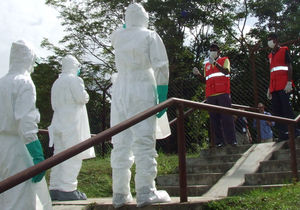 If you have followed this blog, you will know that I am very much in favour of more academic input into our logistics efforts. As you can imagine, I was tickled pink when I saw the ads for a new book about humanitarian logistics, written by respected INSEAD academics Rolando Tomasini and Luk Van Wassenhove.
If you have followed this blog, you will know that I am very much in favour of more academic input into our logistics efforts. As you can imagine, I was tickled pink when I saw the ads for a new book about humanitarian logistics, written by respected INSEAD academics Rolando Tomasini and Luk Van Wassenhove.
Let me not mince words here: I am disappointed. Expectations are high when a prestigious university like INSEAD releases a book under its own impressum, but those expectations are not met – not even closely. The reason actually is made clear in the first paragraph of the book. The authors describe their experience in humanitarian logistics on which they base the book: case studies they did for WFP/UNJLC, the IFRC, and FUNDESUMA. In other words, they base a book about humanitarian logistics in general on limited experience with three organisations that are very unrepresentative of the sector as a whole. This has clear effects throughout the book: although they do make some valid observations (especially when they talk about partnering with the private sector, which is clearly their focus), much of what they describe is over-simplified, or even dead wrong.
All three of the organisations they worked with (especially the IFRC and FUNDESUMA) have a focus on disaster aid, which obviously skewed their view severely. It leads to occasionally ridiculous assertions; a good example is that, according to Tomasini and Van Wassenhove, in humanitarian supply chains “… time cycles are very short [and] new and unprecedented demands occur frequently …” (p. 8). Definitely true in some types of humanitarian response – specifically disaster response – but totally untrue of many other types. When the authors describe the characteristics of a humanitarian supply line (ch. 1), they very clearly have a specific type of humanitarian response in mind; a type of response that in reality makes up a minority of humanitarian work.
Chapter 5, which is devoted to information management (which people who know me will immediately recognise as one of my personal hobby horses), goes as far as basically describing the SUMA model (with a bit of info about UNJLC’s website thrown in for good measure) as the paradigm to follow, without recognising that it is totally inappropriate for a majority of humanitarian aid work. A bit of scrutiny of e.g. humanitarian.info would have been useful to inform this chapter.
The book comes into its own in chapter 7, about partnerships between humanitarian and corporate organisations. It is very obvious that this is what the authors are experts in, and it is the most useful and well-written chapter of the book. Sadly, that is not enough to justify its rather inflated price.
All in all, this is a missed chance. Gentlemen, I just know you can do better: get to it.
{



